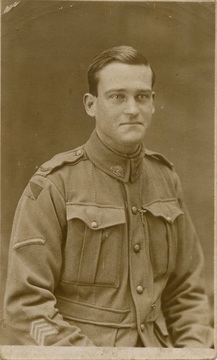HYNES, John
| Service Number: | 2345 |
|---|---|
| Enlisted: | 5 October 1915, Place of Enlistment, Rockhampton, Queensland. |
| Last Rank: | Bombardier |
| Last Unit: | 5th Light Horse Regiment |
| Born: | Capella, Queensland. , 20 November 1888 |
| Home Town: | Rockhampton, Rockhampton, Queensland |
| Schooling: | Not yet discovered |
| Occupation: | Labourer |
| Died: | Mustering Accident. , Springsure, Central Highlands, Queensland. , 16 April 1939, aged 50 years |
| Cemetery: |
Springsure Cemetery |
| Memorials: |
World War 1 Service
| 5 Oct 1915: | Enlisted AIF WW1, Private, 2345, 5th Light Horse Regiment, Place of Enlistment, Rockhampton, Queensland. | |
|---|---|---|
| 5 Apr 1916: | Involvement Private, 2345, 5th Light Horse Regiment, --- :embarkation_roll: roll_number: '2' embarkation_place: Sydney embarkation_ship: HMAT Mashobra embarkation_ship_number: A47 public_note: '' | |
| 5 Apr 1916: | Embarked Private, 2345, 5th Light Horse Regiment, HMAT Mashobra, Sydney | |
| 11 May 1916: | Promoted AIF WW1, Lance Corporal, 5th Light Horse Regiment | |
| 26 Oct 1916: | Promoted AIF WW1, Bombardier, 5th Light Horse Regiment |
John Hynes.
John Hynes, regimental number 2345, is named in the Australian Archives as having been born in 1888 in the tiny town of Capella, Queensland. The town’s population at the time was a little over 200 people. He enlisted to the 5th Light Horse Regiment, 16th Reinforcement on the 5th of October 1915 aged 27. He was unmarried at the time. He returned to Australia in 1919 having served on the Western Front as a horseman and later as a bombardier in an ammunition column.
Unlike UK and Irish records, the Australian WWI records are free to view and Pte. Hynes’ 39 pages of records are reproduced in full. These go into some detail including:
He was absent from barracks without permission for a day in 1916, was reprimanded and lost a day’s pay.
He contracted mumps in October 1916 and was hospitalised in January 1918 with what we would now call an STI. He was not alone. The Australian Army’s losses to SDIs in World War I were enormous. An estimated 63,350 cases occurred among the 417 000 troops of the Australian Imperial Force (AIF). Put another way, one in seven of the soldiers who joined the AIF contracted an STD at some stage of the war.
Later in 1918, at Outreau on France, the horse on which he was riding fell into a shell hole and on top of him causing him a groin injury.
His subsequent medical report for invalidity pension stated he should be relieved of duties because of “Injury and mumps in a neurotic man attributable to an injury in service, attributable to service”
“When walking he… shakes all over, gets dyspneic attacks at night (shortness of breath)… sleep irregular.”
Jack Hynes was invalided out as unfit for service and awarded a 60% disablement pension. He was sent back to Australia from Weymouth in April 1919 which is very likely when our photo was taken. Evidence for this being the Weymouth address in the photographer’s details on the back of the photo.
Having survived the war, he married and returned to his profession as a cattle drover. However tragedy was not far away.
On the 16th of April 1939 Jack Hynes was on horseback rounding up a herd of cattle at the 600 square mile Planet Downs cattle station. During the chase, one of the beasts collided with his horse and both fell to the ground. In an accident almost identical to that which befell him during the war, his horse rolled on top of him and crushed him. On this occasion he wasn’t to survive, losing his fight for life on the way to hospital.
Courtesy of WW1 Anzac Story.
Submitted 17 April 2021 by Lynette Turner











